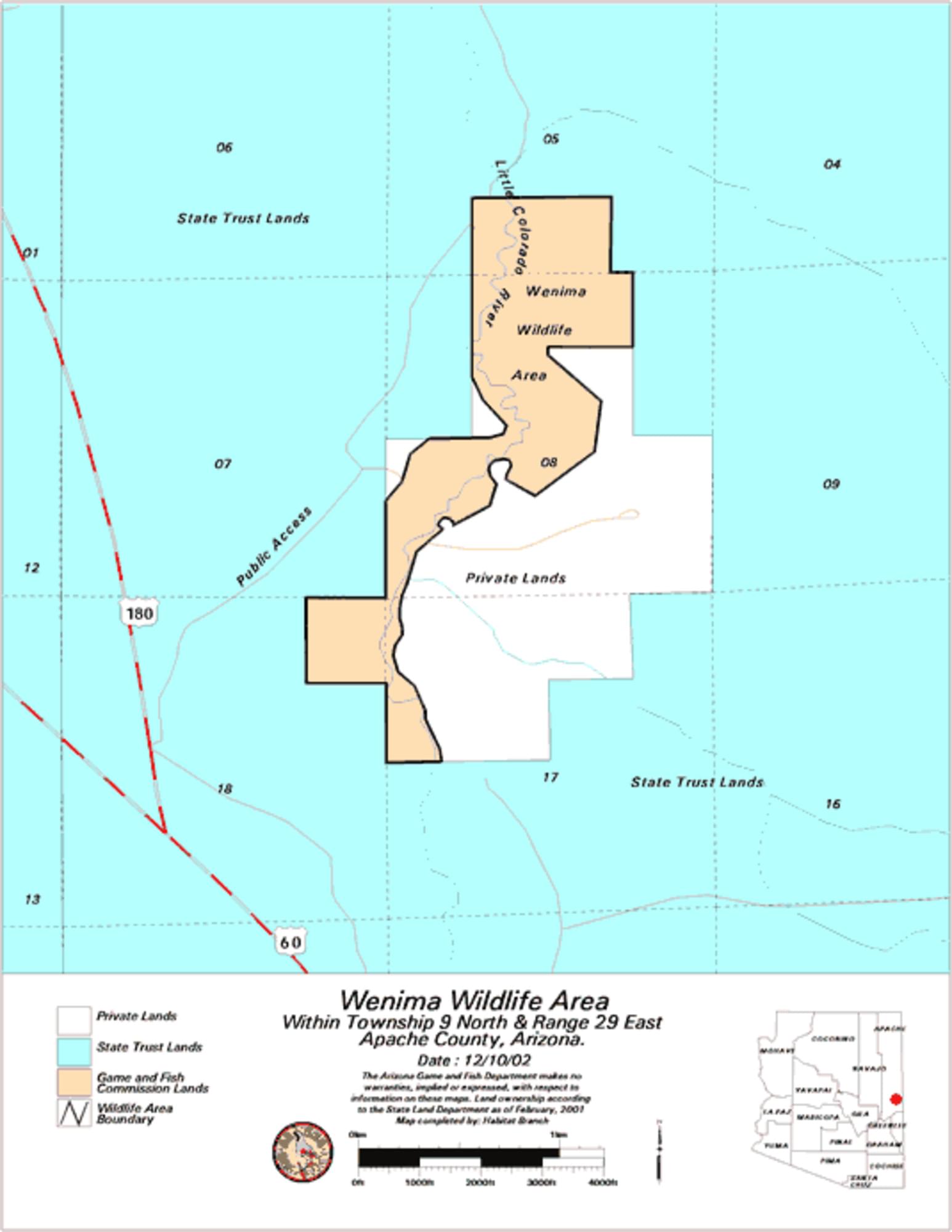Wenima WA
Birds of Interest
Wenima Wildlife Area is an excellent site to view a wide variety of birds. Birding can be done throughout the year but is best in spring, summer, and fall. Numerous waterfowl, birds, and raptors can be seen here, including golden eagle, American kestrel, belted kingfisher, blue grosbeak, indigo bunting, black-crowned night-heron, green-backed heron, yellow-breasted chat, black phoebe, gray catbird, and a variety of migrating warblers and songbirds. Check the bluff edges for raptors. Both mountain and western bluebirds are found in the junipers in winter.
About this Location
On January 28, 1993, the first parcel of the Wenima Wildlife Area, consisting of 205 acres, was purchased by the Arizona Game and Fish Department through its Heritage Fund. This constituted the first “fee title” Heritage acquisition in the state. Waterfowl Conservation Funds were also utilized in the acquisition. On February 22, 1995, the purchase of the adjacent Slade property added 152 acres to the Wenima Wildlife Area bringing the total size to 357 acres. The land and resource values associated with this acquisition provide opportunities to meet the objectives of Arizona’s Heritage Fund for Threatened, Endangered, and Sensitive species, and habitats, as well as provide benefits for other wildlife species and recreational opportunities for the public.
The Wenima Wildlife Area is located in east-central Arizona, approximately three miles northwest of the towns of Springerville and Eagar. To get there, take U.S. Highway 60 a couple of miles west going out of Springerville. At the junction of US-60 and US-180/US-191, go a quarter-mile north on US-180/US-191 and look to turn right onto a graded dirt road going northeast. After 1.5 miles, the graded road drops a short distance into the Little Colorado River canyon corridor. Park at the designated parking area next to the restroom and information kiosks. The wildlife area is open from sunrise to sunset.
Since its acquisition, the Department has steadily enhanced the habitat values of the property and attractions for visitors. Two hiking trails provide easy access to both streamside and upland areas where you can view beaver, mule deer, pronghorn antelope, ringtail cat, ground squirrels, chipmunks, rabbits, and lizards. Powerhouse Trail is .7 mile in length, proceeding south from the east side of the bridge over the Little Colorado River, while Beavertail Trail runs 1.5 miles north, starting from the west side of the bridge.
Content from Official Website
